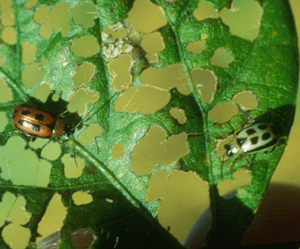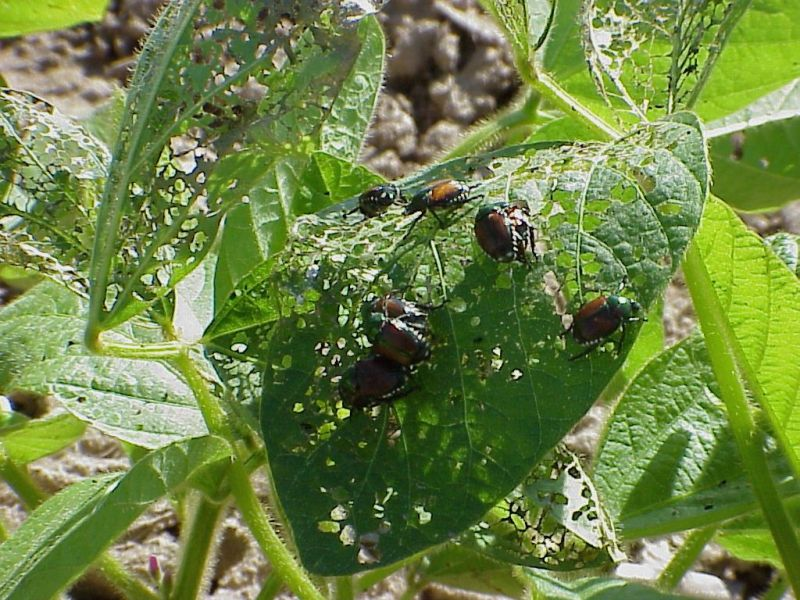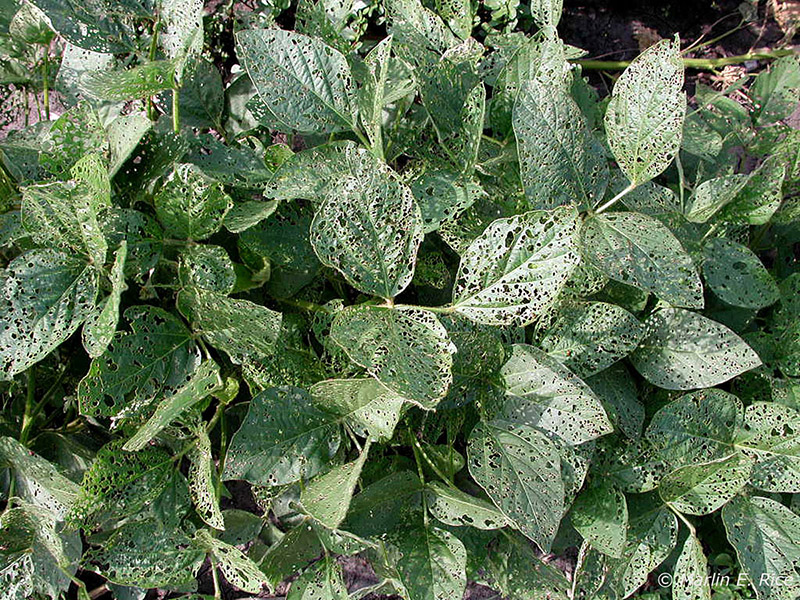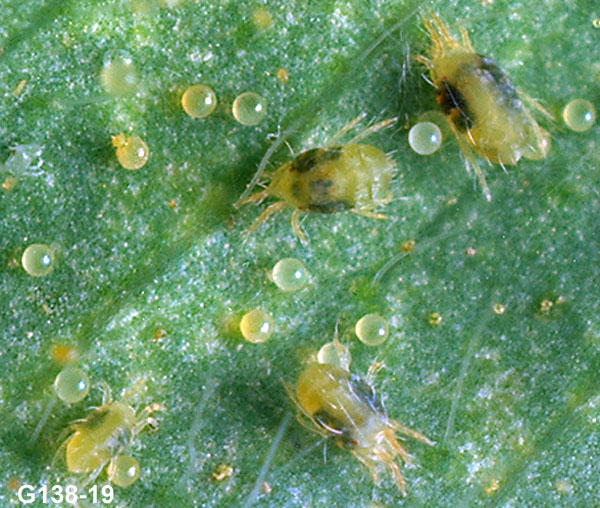As the growing season gets underway, there are several insect pests that could be bugging your soybeans. While there is definitely a mixed bag of defoliators and pod feeders as you scout throughout the season, here are a few you might come across.
 Bean Leaf Beetles. Adults overwinter near bean fields in woodlots or along fence rows. They become active in the spring when temperatures rise above 50⁰ and can be found feeding on soybean foliage soon after emergence. Adults lay eggs in the soil and larvae will feed on root systems for a few weeks before pupating. Two generations will occur during the growing season.
Bean Leaf Beetles. Adults overwinter near bean fields in woodlots or along fence rows. They become active in the spring when temperatures rise above 50⁰ and can be found feeding on soybean foliage soon after emergence. Adults lay eggs in the soil and larvae will feed on root systems for a few weeks before pupating. Two generations will occur during the growing season.
Slugs. While not a true insect, this soybean pest is favored by moist conditions and fields with plant residue. Slugs are active during cloudy days and at night. They leave a slimy trail wherever they go and can be found under residue or dirt clods during the day. They feed primarily on the lower part of the plant, giving the leaves a tattered and sometimes distorted appearance.
Thistle Caterpillars. Adult painted lady butterflies migrate annually in late spring into Illinois from the Southern US. They lay single eggs on soybeans as well as thistle species. After hatching in about seven days, caterpillars will feed for 2-6 weeks before pupating. Adults emerge in late July and August and will migrate back south beginning in September.
Soybean Aphids. Soybean aphid populations are often sporadic and unpredictable. When present in large numbers feeding may impact plant growth and cause stunting, leaf yellowing and reduced pod set, along with reduced seed size and quality. The greatest risk of yield loss is when injury occurs during the R1 to R4 growth stages.
 Japanese Beetles. Always a concern, Japanese beetles have one generation per year. They overwinter as third instar larvae in the soil below the frost line. They pupate in the spring and adult emergence begins in late June. Adults feed on host plants, mate and begin laying eggs in mid-July. While larvae feed on plant roots and decaying plant material, the soybean defoliation caused by the adult beetles causes the greatest concern.
Japanese Beetles. Always a concern, Japanese beetles have one generation per year. They overwinter as third instar larvae in the soil below the frost line. They pupate in the spring and adult emergence begins in late June. Adults feed on host plants, mate and begin laying eggs in mid-July. While larvae feed on plant roots and decaying plant material, the soybean defoliation caused by the adult beetles causes the greatest concern.
 Cloverworms, Webworms and Grasshoppers. These defoliators generally do not cause economic injury on their own, but collectively can be a problem, especially combined with Japanese beetles and other defoliators. Grasshoppers also tend to be more of a problem during dry years.
Cloverworms, Webworms and Grasshoppers. These defoliators generally do not cause economic injury on their own, but collectively can be a problem, especially combined with Japanese beetles and other defoliators. Grasshoppers also tend to be more of a problem during dry years.
 Two-spotted Spider Mites. This soybean pest generally makes it appearance during hot and dry conditions. During hot, dry months mite populations can increase very quickly. Injury is usually first observed along field edges. Leaves turn yellow or brown and fields may take a bronzed appearance as mite densities increase. Severely injured leaves eventually drop off plants.
Two-spotted Spider Mites. This soybean pest generally makes it appearance during hot and dry conditions. During hot, dry months mite populations can increase very quickly. Injury is usually first observed along field edges. Leaves turn yellow or brown and fields may take a bronzed appearance as mite densities increase. Severely injured leaves eventually drop off plants.
Stink bugs. There are several species of stink bugs that are common in soybeans, including the green stink bug and brown stink bug. The invasive brown marmorated stink bug is also starting to infect agronomic crops. There are also beneficial stink bugs (the spined shouldered stink bug and two-spotted stink bug) that are present that feed on crop pests. Stink bugs use their piercing-sucking mouth parts to feed on developing seeds during the reproductive stages of soybean development.
While it is hard to fully cover all potential insect pests of soybeans in a short blog post, this does highlight a few. Soybeans have the ability to withstand some substantial feeding from insect pests, but timing is key. It’s important to get out and scout fields to look at the growth stages of not only the plants, but the life stages of the insects.




 and then
and then